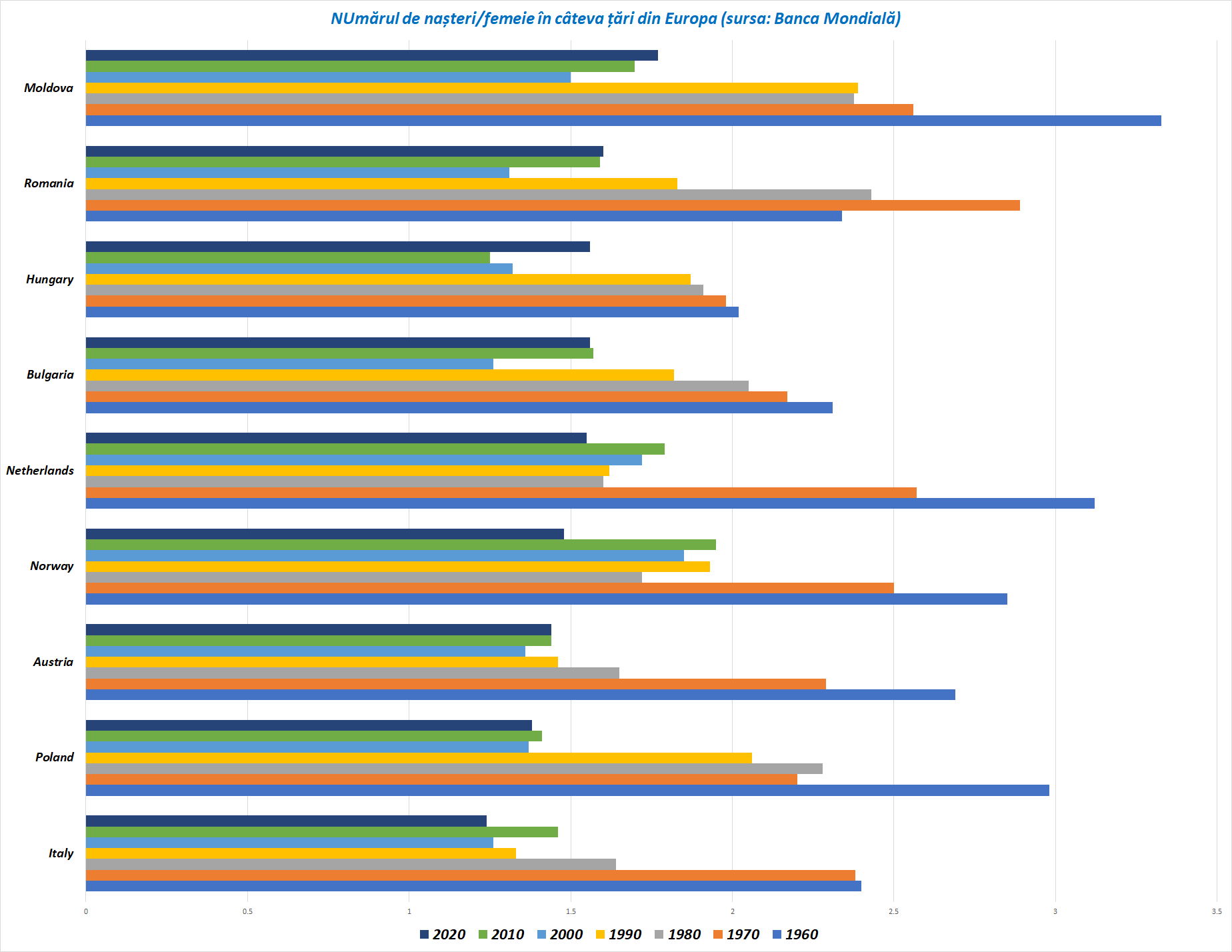
According to the World Bank, from 2.3 children born to a Romanian woman on average in 1960, the number of births has decreased to 1.6. The decline in the birth rate is characteristic not only for Romania, but also for most European countries. In the first two months, 10,000 fewer children were born in Romania than 5 years ago, according to data sent on Monday by statistics.
In recent years, Romania’s birth rate has been steadily declining, each year bringing new negative records of decline, putting into question the sustainability of public finances.
With the birthrate falling rapidly and the number of seniors over 85 doubling between 2003 and 2022), raising fears that a shrinking and rapidly aging population will put additional pressure on finances, meaning in the medium to long term higher taxes or increased retirement age

4 out of 10 couples who want a child cannot conceive despite trying for 1-5 years (one out of 10 couples have been trying for more than 5 years), according to official data. Other couples do not want to have children, preferring first to achieve a level of economic well-being and a professional career.
But this applies not only to Romania. Italy is one of the developed economies that has a historically low birth rate.
World Bank data shows that in 2020, the average number of children per woman was below 2 in all advanced economies except Israel.
Which means fewer and fewer children and more and more elderly people
- Increasing level of dependence. If the retirement age remains fixed and life expectancy increases, the number of those who will rely on the state pension will increase, and the number of workers – those who provide money from the pension budget – will decrease. .
- Increase in public spending on health care and pensions. Each person who retires creates a “gap” in the state budget because the taxes he pays on income are lower (the pension is lower than the salary and the state will collect less money at the same tax rate). This combination of higher spending on pension budgets and lower tax revenues should cause concern for current and future governments. Because in the medium to long term, if we don’t intervene through pro-natalist policies, the budget will have serious deficit problems.
- Increase in labor taxes. Romanians who will work may be taxed more so that the state can support the growing mass of pensioners
- Structural changes in the economy. The increase in the number of pensioners will lead to the development of the market for goods and especially services for the elderly (home care, nursing homes, pharmaceuticals and personal hygiene products, etc.).
Solving the problem stated in the title can be solved in three ways: by increasing taxation in the future, by raising the retirement age, or by a really effective pro-natalist policy
According to INS forecasts, by 2060 the young population aged 0-14 will experience a significant reduction (in the average version) in the urban environment from 1.56 million people to 5.8 thousand people to 890 thousand people, and the share of the population of residents aged 0 -14 years in the total population will decrease slightly from 15% to slightly more than 11%.
As for the rural environment, the young population aged 0-14 will decrease from 1.48 million to 878,000 in 2060, its share of the total resident population will decrease from 16.4% to 14.1% in 2060.
From the total urban youth population (0-14 years) projected at the national level (in the average version) for 2060, the north-eastern, central and south-western regions of Oltenia will be in the upper part of the “young”. regions with the highest proportion of young urban population (over 12.0%), and for rural environments the highest proportion is expected in the Northeast (17.0%), Northwest (15.7%) and Southeast regions (14.5% ).
The North-West, South-Muntenia, West and Bucharest-Ilfiv regions will stand out with the lowest share of the young population in the urban environment (below 12.0%), and in rural areas – the South-West region of Oltenia (10.3%) and Sud- Muntenia (12.0%), statistics show
Source: Hot News
Lori Barajas is an accomplished journalist, known for her insightful and thought-provoking writing on economy. She currently works as a writer at 247 news reel. With a passion for understanding the economy, Lori’s writing delves deep into the financial issues that matter most, providing readers with a unique perspective on current events.